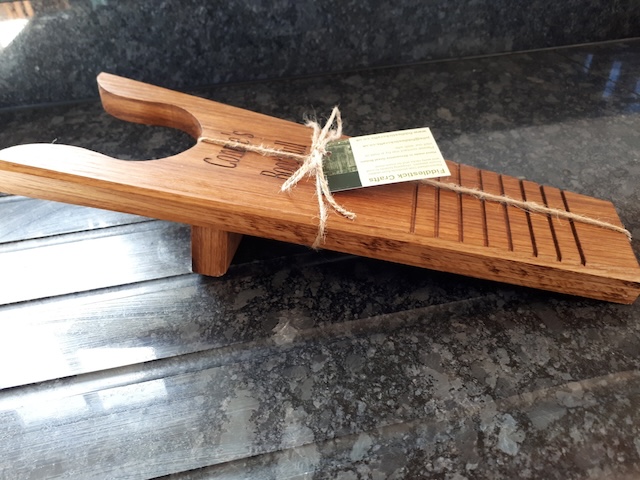Do You Remember What This Is? If You Do, You’re Probably Feeling Nostalgic. But Did You Know The Intriguing Story Behind Its Invention?-s1
The wooden boot jack was once an essential household item, especially for those who lived in rural or farming communities. It was a practical tool used to help people remove their boots without having to bend over, making it incredibly useful after a long day of labor. Typically, the user would place one foot on the flat end, with the other boot in the U-shaped slot, and pull the boot off effortlessly. Its simplicity and durability made it a must-have in homes across generations.
The Origins of the Wooden Boot Jack
The wooden boot jack dates back to the early 19th century when boots were a staple of daily attire. In rural settings, boots protected people from the rough terrain and the harsh weather conditions. However, after a long day of walking through mud or tending to animals, pulling off those boots was no easy task. That’s where the boot jack came in—a simple yet ingenious invention that allowed individuals to take off their boots without straining themselves.

The traditional design, which hasn’t changed much over the centuries, includes a “V” or “U” shape at one end, where the heel of the boot is placed. The other end lies flat on the ground, creating a leverage point. All it takes is placing one foot on the flat side and wedging the heel of the boot into the “U” or “V” slot, pulling up, and off comes the boot. It’s a solution that worked wonders before zippers and laces became the norm for footwear.
How the Wooden Boot Jack Became a Household Staple
In households, especially in agricultural or ranching communities, the wooden boot jack became more than just a tool—it became a symbol of rural life. Families would often leave the boot jack outside their homes or near the entrance, making it accessible for everyone returning home. Children grew up watching their parents use it, and soon enough, it became a part of everyday life.
Many wooden boot jacks were handmade, passed down through generations, and often bore marks of heavy use. It wasn’t just a tool; it became a keepsake, a connection to the hard work and effort put into living a life of self-sufficiency. Some even incorporated decorative elements, turning this simple utility into a charming piece of craftsmanship.

Fun Facts About the Wooden Boot Jack
Though simple in appearance, the wooden boot jack has an interesting history. Some older versions had intricate carvings, showcasing the maker’s skill. In some cultures, they were even given as gifts during celebrations like weddings, signifying the start of a new journey for couples building a life together. It’s remarkable how such a practical device held deeper meaning in various settings.
Another fascinating fact is that, in the Victorian era, boot jacks became a symbol of refinement. Gentlemen would use them to remove their well-crafted leather boots after a formal day in the city, while in the country, farmers relied on their boot jacks after working in the fields.
The Decline and Revival of the Wooden Boot Jack
With the rise of modern footwear, the need for a wooden boot jack began to decline. Zippers, elastic bands, and laces made it easier to slip in and out of shoes. But for those who still wore heavy-duty boots, especially in farming or ranching, the boot jack remained indispensable.

In recent years, however, there’s been a renewed interest in vintage tools like the boot jack, partly due to the rising trend of retro and rustic home décor. It’s now seen as not just a practical tool but also as a nostalgic reminder of simpler times. Many people enjoy having one as a functional piece of history, showcasing it as a decorative item in their homes.
Conclusion
While modern conveniences have reduced the necessity for items like the wooden boot jack, its history and functionality continue to be celebrated. From its roots in the rural farms to its revival as a vintage décor item, the boot jack remains a fascinating artifact of everyday life from a bygone era. Whether used to ease the task of removing boots or as a conversation piece, the wooden boot jack is a must-have for lovers of vintage craftsmanship and history.




